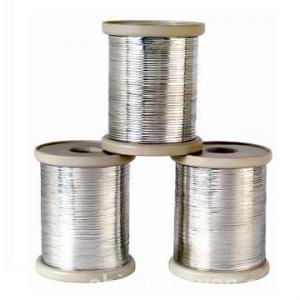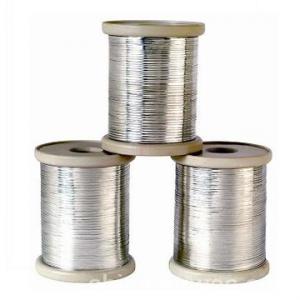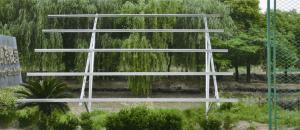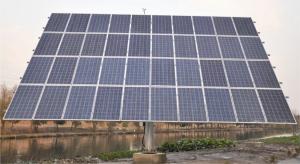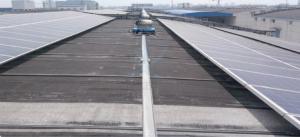Bus Ribbon-manual welding 0.35*6
- Loading Port:
- China Main Port
- Payment Terms:
- TT or LC
- Min Order Qty:
- -
- Supply Capability:
- -
OKorder Service Pledge
OKorder Financial Service
You Might Also Like
Structure
We produce custom engineered solar tabbing and bus wire helping to attain the highest efficiencies possible for each unique module design. Our Research and Development team can assist you with your needs evaluation and our world-wide manufacturing facilities are strategically located for large volume production.
Feature
The Flux should be compounded and processed in such a manner as to be uniform in quality and should be free from deleterious material and other details that will after life serviceability or appearance.
Cold Rolling Mills for manufacturing Photovoltaic (PV) Ribbon:
Cold Rolling Mills for manufacturing Photovoltaic Ribbon
This machine is for making Bare flat copper conductors which is using PV Ribbon Wire , Tinned plated flat copper conductors which is using FFC or materials and it was designed to make the best quality products with high productivity as well as easy to control.
Machine capacity
Tinned plated flat copper conductors which is using FFC
Images
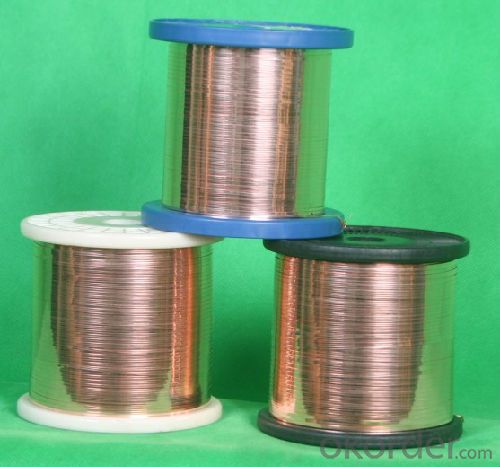
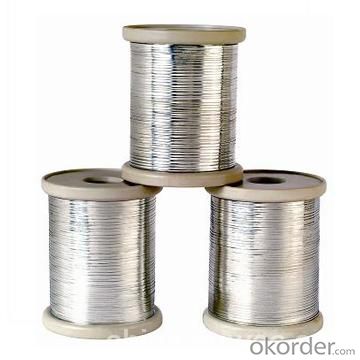
Specifications
Mechanical Property:
1,Elongation: E-Soft≥20% U-Soft≥15%
2,Tensile strength:≥170MPa
3,Side camber: L≤3mm/1000mm
4,Soldering tin melting point: 180−230°c
Electrical Resistivity of Copper:
TU1≤0.0618 Ω • m m2/m; T2≤0.01724 Ω•m m2/m
Core Copper of TU1 Off-Cu :
1,Copper Purity 9≥9.97%, Oxygen≤10ppm
2,Resistivity:ρ20≤0.017241Ω • m m2/m
Electrical Resistivity of Ribbon:
(2.1−2.5)X10-2 • mm2/m
Plated Thickness:
15-25um per side
FAQ
Q:How to guarantee the quality of the products?
A:We have established the international advanced quality management system,every link from raw material to final product we have strict quality test;We resolutely put an end to unqualified products flowing into the market. At the same time, we will provide necessary follow-up service assurance.
Q:Can we visit your factory?
A:Surely, I will arrange the trip basing on your business schedule.
Q:Which payment terms can you accept?
A:T/T,L/C,Moneygram,Paypal are available for us.
- Q:Can a solar mounting system be installed on a rooftop with a flat membrane roof?
- Yes, a solar mounting system can be installed on a rooftop with a flat membrane roof. Flat membrane roofs are commonly used for commercial and residential buildings, and they offer a suitable surface for solar panel installations. However, it is important to ensure that the solar mounting system is compatible with the specific type of flat membrane roof, and that proper precautions are taken to prevent any damage to the roof membrane during installation. Consulting with a professional solar installer or a roofing specialist is recommended to ensure a safe and effective installation.
- Q:What is the impact of solar cells on reducing electricity bills?
- Solar cells have a significant impact on reducing electricity bills as they generate renewable energy from the sun, which can be used to power homes or businesses. By harnessing solar power, individuals can reduce their reliance on traditional electricity sources, resulting in lower monthly bills. Additionally, excess energy produced by solar cells can be fed back into the grid, earning credits or payments that further offset electricity costs. Overall, solar cells provide a sustainable and cost-effective solution for reducing electricity bills.
- Q:Can solar collectors be used in solar thermal process heating?
- Solar thermal process heating utilizes solar collectors to effectively heat fluids or materials for industrial processes. These collectors, also referred to as solar thermal collectors, absorb sunlight and convert it into heat energy. By capturing solar radiation and transferring the heat to a fluid, solar collectors can be used in a range of industrial applications. There are different types of solar collectors suitable for solar thermal process heating. Flat plate collectors, for example, consist of a dark-colored absorbing plate covered with a transparent cover and insulation on the backside. These collectors absorb sunlight and transfer the heat to a fluid flowing through pipes or channels within the collector. Evacuated tube collectors, on the other hand, are more efficient in capturing solar radiation with their rows of parallel glass tubes, each containing an absorber tube. The use of solar thermal process heating offers various benefits, including reduced dependence on fossil fuels, lower operating costs, and decreased carbon emissions. By harnessing the sun's energy through solar collectors, industries can significantly minimize their energy consumption and environmental impact. The application of solar thermal process heating extends to multiple sectors, such as food processing, textile manufacturing, and chemical production. In conclusion, solar collectors provide a viable and effective solution for solar thermal process heating. Their utilization enables industries to embrace renewable solar energy, resulting in cost savings and sustainability.
- Q:How does the depth of the water table affect the performance of a solar pump?
- The depth of the water table directly affects the performance of a solar pump. As the depth of the water table increases, the pump needs to work harder to lift the water to the surface, resulting in decreased efficiency and output. Therefore, a shallower water table allows the solar pump to operate more efficiently and effectively.
- Q:Can a solar water heater be used in areas with limited wind resources?
- Yes, a solar water heater can be used in areas with limited wind resources. Solar water heaters rely on sunlight to heat water, not wind. Therefore, the availability of wind is not a determining factor for the effectiveness of a solar water heater.
- Q:Can a solar controller be used with solar-powered indoor smart home systems?
- Solar-powered indoor smart home systems can indeed utilize a solar controller for optimal functionality. This essential component, also known as a charge controller, serves a crucial role in regulating the flow of electricity from the solar panels to the batteries. Its primary purpose is to ensure the batteries are charged optimally and prevent any potential damage or overcharging. In the specific context of solar-powered indoor smart home systems, the solar controller would play a vital role in managing the power generated by the solar panels. During daylight hours when solar energy is available, the controller would regulate the charging of the batteries. This stored energy would then be supplied to power the indoor smart home devices during the night or when solar generation is low. By implementing a solar controller, a solar-powered indoor smart home system can effectively harness solar energy, reduce reliance on the grid, and potentially save on electricity costs. Additionally, the controller offers monitoring and control functionalities, enabling users to track the performance of their solar power system, adjust charging settings, and safeguard against potential electrical issues. It is important to consider the compatibility between the solar controller and the indoor smart home system. The controller must be capable of handling the power requirements of the smart home devices and should be compatible with the battery system in use. It is recommended to seek professional advice or consult with the manufacturer of the solar controller and smart home system to ensure proper compatibility and seamless integration.
- Q:Can solar chargers charge hearing aids?
- Yes, solar chargers can charge hearing aids as long as they have the appropriate charging capabilities and compatible connectors for the specific hearing aid model.
- Q:Can solar cells be used to power water purification systems?
- Yes, solar cells can be used to power water purification systems. Solar cells convert sunlight into electricity, which can then be used to power various devices, including water purification systems. This allows for a sustainable and environmentally-friendly solution to provide clean and safe drinking water in areas without access to electricity grids.
- Q:Can I use a solar charger to charge my portable water purifier?
- Yes, you can use a solar charger to charge your portable water purifier, as long as the purifier is designed to be charged with a USB or DC input. Solar chargers are compatible with various electronic devices, including portable water purifiers, and provide a sustainable and environmentally friendly way to keep them powered.
- Q:Can solar panels be installed on a remote island or location?
- Yes, solar panels can be installed on a remote island or location. Solar panels are a flexible and sustainable energy solution that can function independently of the grid, making them suitable for remote areas. They can generate electricity by harnessing sunlight, which is abundant in most locations, including islands. Additionally, advancements in solar technology have made it possible to install panels in challenging environments, such as extreme temperatures or harsh weather conditions.
1. Manufacturer Overview |
|
|---|---|
| Location | |
| Year Established | |
| Annual Output Value | |
| Main Markets | |
| Company Certifications | |
2. Manufacturer Certificates |
|
|---|---|
| a) Certification Name | |
| Range | |
| Reference | |
| Validity Period | |
3. Manufacturer Capability |
|
|---|---|
| a)Trade Capacity | |
| Nearest Port | |
| Export Percentage | |
| No.of Employees in Trade Department | |
| Language Spoken: | |
| b)Factory Information | |
| Factory Size: | |
| No. of Production Lines | |
| Contract Manufacturing | |
| Product Price Range | |
Send your message to us
Bus Ribbon-manual welding 0.35*6
- Loading Port:
- China Main Port
- Payment Terms:
- TT or LC
- Min Order Qty:
- -
- Supply Capability:
- -
OKorder Service Pledge
OKorder Financial Service
Similar products
New products
Hot products
